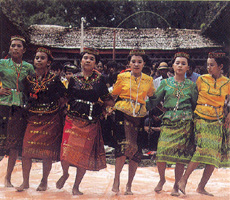Department of Humanities: Courses of Study
 |
Asian and Oceanian Studies"Seeking to experience the cultural traditions of our neighbors" |
Asia and Oceania as Neighbors
Japan is where Asia and Oceania touch, so Asia and Oceania are our neighbors. Asia lends its name to the greatest portion of the Eurasian Continent from Turkey to Japan, and Oceania is the vast area which includes Hawaii and Easter Island to the west of Japan, Micronesia to the south, and Australia and New Zealand in the Southern Hemisphere. Asia and Oceania together not only occupy more than half of the earth, but also represent an immense and profound world of ancient and diverse cultural traditions. It is important for us to know more about these cultures and to explore their charms, as Asia and Oceania play an increasingly important role in today's changing world.
Diversity and Tradition in Asia and Oceania
There are more than 50 countries in Asia and Oceania, but the cultures they contain are much more numerous than that. More than a half of the 7000 languages in the world are scattered over these regions. In addition, Asia and Oceania are areas that have an impressively long history of thought and traditions in fields such as philosophy, literature, lifestyle and customs. When you hear the words Asia and Oceania, what comes to mind? Perhaps you think of beautiful ethnic clothes, tasty food, or isles of coral reef floating in cobalt-colored seas. However, the charms of Asia and Oceania go beyond such images. Asia and Oceania will become more familiar and attractive neighbors as you learn more deeply about the history, thought and lifestyles that have produced such cultures and traditions.
The Future of Asia and Oceania
In considering the society and history of Asia and Oceania, we cannot forget the long days of colonial rule. It is not too much to say that European countries secured their own prosperity through the colonization and exploitation of Asia. As a result, these areas also have problems peculiar to modern society, such as religious confrontation and racial tension. Nowadays, Asia and Oceania are playing a much more central role in world politics and economics, as the 21st century unfolds. As we ponder the future of the whole human race, it is of increasing importance to learn about both the problems and the possibilities of Asia and Oceania.